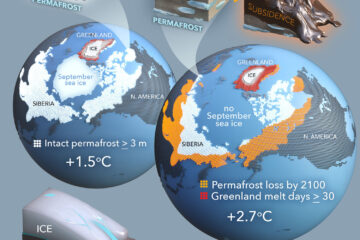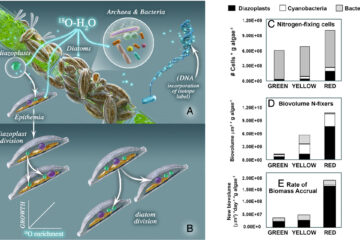Effects of elevated CO2 and herbivore damage on litter quality in a scrub oak ecosystem
Atmospheric CO2 concentrations have increased dramatically over the last century and continuing increases are expected to have significant, though currently unpredictable, effects on ecosystems. One important process that may be affected by elevated CO2 is leaf litter decomposition. We investigated the interactions among atmospheric CO2, herbivory, and litter quality within a scrub oak community at the Kennedy Space Center, Florida. Leaf litter chemistry in 16 plots of open-top chambers was followed for 3 years; eight were exposed to ambient levels of CO2, and eight were exposed to elevated levels of CO2 (ambient + 350 ppmV). We focused on three dominant oak species, Quercus geminata, Quercus myrtifolia, and Quercus chapmanii. Condensed tannin concentrations in oak leaf litter were higher under elevated CO2. Litter chemistry differed among all plant species except for condensed tannins. Phenolic concentrations were lower, whereas lignin concentrations and lignin/nitrogen ratios were higher in herbivore-damaged litter independent of CO2 concentration. However, changes in litter chemistry from year to year were far larger than effects of CO2 or insect damage, suggesting that these may have only minor effects on litter decomposition.


